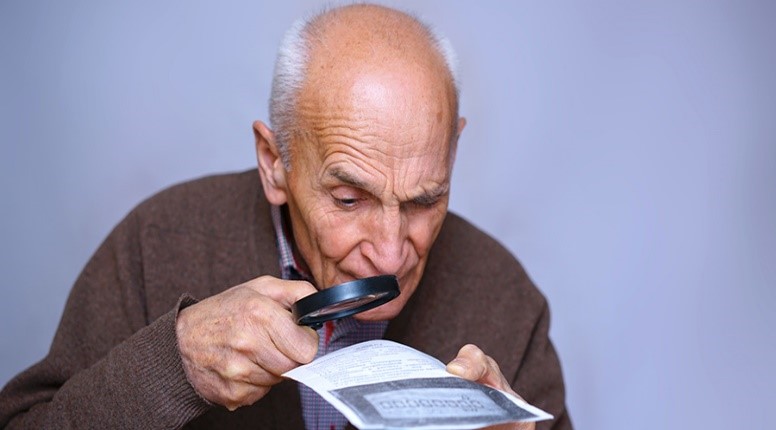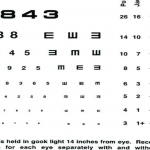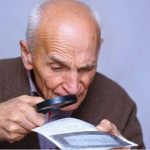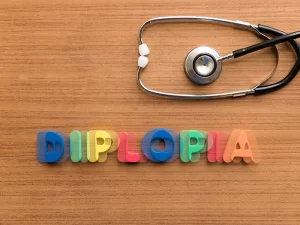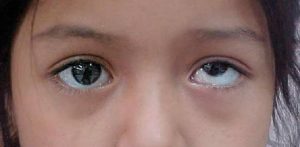According to WHO: Low Vision is visual acuity of less than 6/18 but equal to or better than 3/60, or/and a corresponding visual field loss to less than 20° in diameter, in the better eye with the best possible correction.
Globally, the leading causes of vision impairment are:
- uncorrected refractive errors
- cataract
- age-related macular degeneration
- glaucoma
- diabetic retinopathy
- corneal opacity
- trachoma
Before prescribing any low vision aids to a low vision patient a detailed clinical assessment is required, and the assessment begins by external observation as the patient enters the low vision clinic, followed by detailed history taking and then functional vision assessment is done. The Functional vision assessment is examination of how much vision is available to a low vision individual and how much it can be improved by using any low vision device that is making the most of the remaining vision.
Basic key points to remember while prescribing a LV patient:
- Find out the cause (pathology/disease that caused) of visual impairment: According to the type of pathology suitable aids are given.
- Age of onset of the disease: Patients with congenital visual disability are relatively easy to handle as they are willing to use the devices provided to them, whereas patients with acquired visual disability are difficult to handle a lot of motivation and explanation is required.
- Note the amount of visual acuity, type of visual field defect, colour vision, contrast sensitivity: According to visual acuity the magnification required will vary, also according to visual field devices will vary, for colour vision and contrast sensitivity the necessary optical or non-optical devices will be given.
- Note the age of the person: According to age their hobbies and requirements vary.
- Consider the educational demand: Individuals with no educational background has very little concern for near aids, specially the reading or writing tasks, whereas literate ones may be particular with reading and writing assistive devices.
- Consider the occupation, and other need/requirement of patient: Aids will differ in consideration of the patient’s occupation and requirements.
- Note the economic conditions: Expensive devices might be economically unacceptable to certain patients, along with demonstration of the usefulness of the devices a brief idea of the cost should also be delivered to them.
- Counseling and motivating the patients: The response and acceptance of visually disabled peoples differ, and a low vision specialist should psychologically support and council the patient, and motivate them as being disabled is not end of all.
Common requirements of low vision patient:
- Reading or writing
- Using telephone/mobile
- Housekeeping
- Financial management
- Signing
- Watching TV or working on computer
- Night vision
- Depth perception while doing any task or walking
- Glare free vision
- Recognizing faces and objects
- Mobility in unfamiliar areas etc.



Low vision Aids: these are devices given to a low vision patient to enhance their functional vision. There are different devices like optical devices, non-optical devices, Digital or electronic assistive technology.
Optical devices: they can be sub-divided into four types
- Distance vision devices (Telescopes, magnifying spectacle, pin hole glasses, contact lens etc.)
- Intermediate vision devices (see TV, maxTV, optima TV viewing glasses, telemicroscopes etc.)
- Near vision devices (Simple microscope, spectacle/hand held magnifier, stand microscope, fresnel magnifier, bar magnifier, dome magnifier, CCTV, pocket video magnifier etc.)
- Field Expander (Fresnel field expander, reverse telescope, Elli pelli prism, Amorphic or new horizontal lens, semi reflective mirror, convex lens, concave lens etc.)

Non optical devices: These are aids other than lenses that either supplements or enhances the outcome of optical devices or is used independently. Non-optical aids assist the visually impaired user either to maximize their residual visual potential or to make use of a different output signal in order to stimulate one of the other senses (such as touch or hearing).
There are different types of non-optical devices:
- Relative size and large assistive devices ( Large type playing cards, crossword puzzles, Large number telephone dials, Enlarged print clocks and watches, Big needle threaders, etc.)
- Glare, contrast and light control ( absorptive lenses, polaroid glass, antireflection coating, contrast enhancing lenses/filters, visor, wide beam hats, clip on shields, umbrellas, adjustment of appropriate colour and contrast around the working areas etc.)
- Sensory substitution devices ( talking books, talking calculator, talking clock, talking colour detector, typoscope, braille- six dots, braille embosser and printer, braille writer, fishburne alphabet, basic touch etc.)
- Handwriting and written communication devices ( signature guide, check guides, reading guide, bold line note books and paper, black ink bold tip pens etc.)
- Orientation and mobility management devices ( Folding cane for mobility, Dog guides, Strong portable torch lights, nightscope, sonic pathfinder, pathsounder etc.)
- Medical management devices ( talking thermometer, large print syringe, prefilled syringes with clicking sound, readout sphygmomanometer, large print syringe, talking glucometer etc.)
- Adaptive computer and mobile software ( JSWS screen reading software that is talking computer, connect out load internet and e-mail software, MAGic 8.0 is a screen magnification software with speech etc.)
- Posture and comfort maintain devices (reading rack, book stand, lap desks, copy holder, reading stand tilted 45 to 70 degrees of the vertical etc.)
Digital or electronic assistive technologies: These assistive technology devices overcomes the limitation of optical lenses like reduction in field of view, working distance and contrast. Some examples of assistive technology includes:
- Video magnification systems: (CCTVs) closed circuit televisions and portable video magnification devices.
- Computer hardware and software: these provides magnification of the screen, tactile display, synthesized speech, screen reading software.
These low vision aids are prescribed depending upon the patient’s pathology and needs.
Some clinical examples for low vision aids prescription:
For a patient suffering from ARMD: Patients suffering from Age Related Macular Degeneration have total or partial loss of central field of vision, poor colour vision, distorted image and poor contrast sensitivity.
For ARMD patients near work will be much difficult; as whenever they would like to read or write they could miss words or see them distorted, while identifying someone near to them or doing other near work they would see a center black spot.
These patients could be aided with magnification devices like high plus near magnifying glass, stand magnifiers, CCTV system and other Non-optical Relative size and large assistive devices, so to utilize the peripheral retinal. For contrast sensitivity, colour and contrast could be adjusted in the working environment of the patient.

For a patient suffering from Glaucoma: A glaucoma patient mainly suffers from field defect. For field defect field expanders can be given. Reverse telescopes is a good option, for reduces contrast sensitivity illumination can be increased in the working area, for reduces visual acuity magnifiers can be used.

For a patient suffering from Retinitis Pigmentosa: RP patients suffer from night blindness thus have problem in locating things in dark, have mobility problems due to tubular field of vision.
Hand and Stand self-illuminating magnifiers are very useful, filters can be advised to reduce glare. Problems that arises at night time can be dealt by environmental modification, lightings should be increased, flash lights should always be carried for safe night mobility also adjusting colour contrast of surrounding furniture’s and others things will help.

